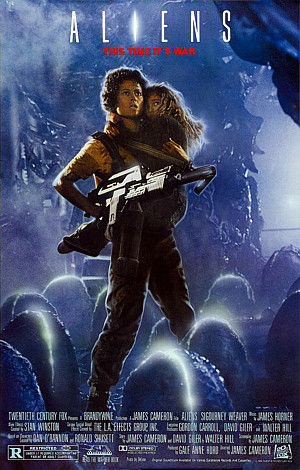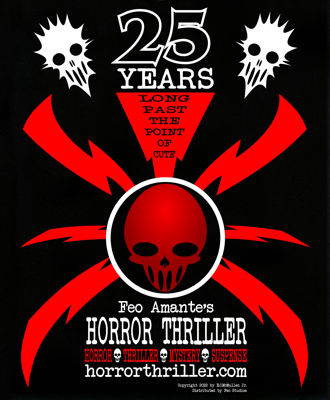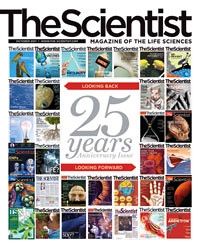 |
 |
Article by Kelly Parks |
 |
Color Commentary by E.C.McMullen Jr. |
AN ALIEN SCIENCE
| 1 | 2 | 3 | 4 |
You have to wonder why the colonists on the now terraformed LV-426 never picked up whatever transmission the crashed alien ship was putting out - a transmission so powerful that the Nostromo could receive it from millions of miles away. Did it stop? Why?
In the 57 years Ripley spends in hypersleep the planet LV-426 (the colonists must have named it - I'm sure they don't use some random catalog number) is terraformed, which means "made Earthlike". It's deep cold and methane atmosphere are altered such that you can live there without a space suit. We're told this is done with the huge atmosphere processor that towers over the rest of the colony. All I can say is that the atmosphere processor we see better just be one of thousands scattered all over the planet if you want to alter the entire atmosphere in the time frame described. Terraforming is a bigger job than most people realize.
This movie expands our knowledge of the alien's life cycle more than any of the others by answering the question, "What is laying these eggs?" The queen, of course. And unlike a queen in an ant colony, this queen is more than just an egg machine. This queen really does control the actions of her troops. In the confrontation with Ripley the queen also displays clear intelligence, immediately understanding what is meant by the flame-thrower being aimed at her eggs.
The intelligence of these creatures is an interesting area of speculation when you keep in mind that they are artificial. That means they're as smart as their creators wanted them to be. Being smart makes them better weapons so I'm sure they'd all qualify for Mensa.
On the other hand the DVD of ALIENS contains evidence to the contrary. For example there's a scene where "robot" sentries are set up to guard a hallway leading in to the complex. The Alien warriors march to their deaths by the dozens, defeating the sentries' guns only by providing more canon fodder than the guns have ammunition.
Not too bright.
But this scene was NOT in the theatrical release - it was one of the many extra scenes cut by James Cameron for the theatrical release but restored for the disc. Because Cameron chose to cut it (and because it doesn't support my theory of smart aliens) I'm choosing to ignore it. Besides, the robot sentries always seemed anachronistically primitive for a culture that's had android level artificial intelligence for more than 60 years, but maybe that's just me. I think the movie makes more sense without that scene.
Going back to the theatrical release, we see more evidence of intelligence when, as part of their final assault on the humans, the aliens cut the power to the colony. This shows not only intelligence, but also an understanding of technology.
One other critically important aspect of these creatures was hinted at in the first movie but made clear in ALIENS: they can survive long periods in vacuum. The alien queen makes it on board the orbiting Sulaco by clinging to the outside of the drop ship as it rose up out of the atmosphere and traveled through the hard vacuum of space. This ability is more strong evidence that these creatures are not only artificial but also that they were specifically designed to survive in and around space vehicles.*

|
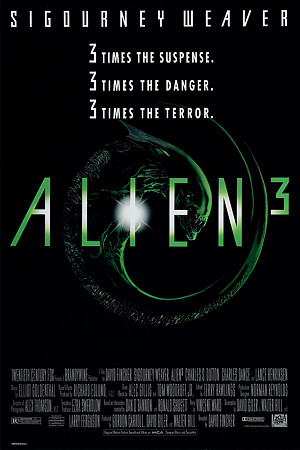
ALIEN³
As mentioned above, ALIEN³ shows us that the form the alien takes is a function of its host. There are also several scenes in ALIEN³ where some would argue you actually see the alien feeding on its victims instead of merely killing them, but I think that's inconclusive. The mystery of how they manage to grow so fast remains.
We also learn that not just the queen can survive in space since the beginning of ALIEN³ makes it clear she brought a few facehuggers with her. Presumably they dropped out of some protective pocket or orifice during the battle with Ripley and scurried away to hide, unnoticed. But the one that gets to Ripley while she's in hypersleep "decides" (if that's the right term here) to implant her with a queen rather than a standard warrior. It becomes obvious that a queen has a longer gestation period since Ripley is up and about for quite a while (unlike her shipmate Kane) before she begins feeling the effects and long before the queen bursts free. The fact that Ripley feels like something is wrong is interesting evidence (in light of the events of ALIEN: Resurrection) that the queen embryo was being a very active parasite, altering its host as it grew.
Real parasites actually do things like that. There's a type of parasite that infects wasps, for example, and one side effect is that an infected wasp can only breed with another infected wasp. It's sterile with uninfected wasps. Thus the parasite is actually breeding the wasps to be better hosts. But remember that these (the aliens) are artificial creatures so anything they do is part of whatever plan their creators had in mind.
In ALIEN³ we also see the awareness the aliens have of each other. When the warrior alien confronts Ripley we assume she's doomed (as everyone else who found themselves in that situation would have been). The warrior gets right up close (smelling her?) and then leaves her untouched, because it could sense she had a queen growing inside her. Would it have reacted differently if she'd had a regular embryo inside? Maybe still not attacked her but at least cocooned her like it had with other victims?

|
ALIEN: Resurrection
In ALIEN: Resurrection, Ripley (who died in the previous film) is brought back as a clone. It becomes clear from the scientists' conversation that they weren't really interested in Ripley at all - just in getting the alien queen embryo she'd been carrying. This scenario both raises questions and offers some more clues.
The cells for the cloning operation, we are told, were taken from a blood sample found in the medical section of the prison complex on Fury 161 (the site of the previous movie). At first I thought the blood sample must have contained cells from both Ripley herself and from the alien queen parasite that was already inside her when the sample was taken. But that still wouldn't explain the need to clone Ripley. Why not just grow the alien queen's cells alone and, if needed, implant them in an existing human as host (something these scientists had demonstrated they weren't shy about doing)?
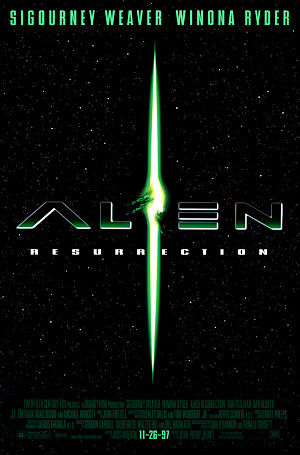 I think the implication here is that there was only one type of blood cell in the sample: Ripley's. But Ripley's cells had been altered at
the genetic level such that having an alien embryo grow inside her
when she reached adulthood was now part of her genome. The alien
technology that created these creatures in the first place was certainly
capable of such an alteration. Thus the human scientists had no
choice but to grow the clone, use some kind of fast growth technique
to force her to adulthood, and then decant her and surgically remove the queen.
I think the implication here is that there was only one type of blood cell in the sample: Ripley's. But Ripley's cells had been altered at
the genetic level such that having an alien embryo grow inside her
when she reached adulthood was now part of her genome. The alien
technology that created these creatures in the first place was certainly
capable of such an alteration. Thus the human scientists had no
choice but to grow the clone, use some kind of fast growth technique
to force her to adulthood, and then decant her and surgically remove the queen.
Much to their surprise, this clone has a variety of "alien-like" abilities, including great strength, acidic blood and a predatory nature. Most surprising of all is that this super-Ripley has most of the original Ripley's memories, which means that while the original Ripley had the queen embryo inside her one of the genetic changes it was making was to record her memories into her DNA.
Why would the queen go to all this trouble? Would it make sense to make all these alterations to her host just to kill it when she pops out? No, I think a queen's host is meant to have a different purpose.
Before I say more about that, let's consider all that we know or think we know so far. These creatures are artificial. They were created as weapons and were meant to terrorize. Why do they use an alien (from their point of view) host, when they could all just grow inside an egg? Because they use their time inside the host to study their enemy, to adapt to their enemy's living conditions.
But consider two things. First, as bio-weapons, an engineered virus would be cheaper and more deadly and much easier to spread around. If the aliens' purpose is just to kill then they're nowhere near as efficient as a good case of super-Ebola. And second, the colonial marines in ALIENS got their asses kicked because they were poorly led and operating on bad intelligence. But if they'd had a bit more fire power (say, an extra squad or two) and a better leader than the inexperienced Lt. Gorman, they'd have won. So again, just what is the ultimate purpose of these creatures?
I have a theory, and it's based on what I believe the queen embryo was doing to Ripley. Making all those genetic changes makes no sense if the queen was just going to kill Ripley, so I believe - if Ripley hadn't killed herself - she would have survived the "burst/birth". She was being transformed into what the super-Ripley was in ALIEN: Resurrection and one of that Ripley's abilities was very rapid healing. The transformed Ripley was also in some kind of nonverbal communication with the queen, finding herself at one point unable to disobey the queen's commands.
So my theory is that these artificial creatures weren't designed as troops or as simple killing machines. They're infiltrators.
It would work like this: the creator race leaves eggs spread around various locations where races they're interested in conquering are known to travel. They stage things like the crashed spaceship on LV-426 that any curious species like us will be drawn too.
Once one of their eggs is found and someone is infected/impregnated the standard procedure would be to create a troop of warriors first to subdue resistance and further recon the situation. Then a host or two is selected to create queens, which, at the same time, turn the hosts into useful slaves. The nest would remain hidden while the normal-looking slaves would return to their home planet and spread facehuggers around to create more warriors, queens and slaves (presumably, once they reach that point, they could create slaves without having to make a queen each time). Depending on how quickly the target species caught on, this type of invasion might succeed on its own or it might just serve to soften resistance for when the creator race arrives. Either way, one of the first duties of a well established nest would be to use whatever technology they found to phone home and let their masters know where they were.
So how does all this fit with the bizarre creature the queen creates at the end of ALIEN: Resurrection? The creature that seems to love Ripley and that she apparently loves in return? I regard it as the next step in the process these creatures go through to remodel themselves to fit their target species' environment. I think it was a new queen (which is why it killed the queen that created it: dominance) stronger, smarter and better adapted to handling humanity. Fortunately Ripley herself still felt enough loyalty to humanity to kill it. Clearly the creators still have a few bugs to work out of the system.
In ALIEN: Resurrection we see how there were many failed attempts at creating a separate Ripley and Queen. Most of the previous attempts were a blend of the two: a human/alien mule - deformed and useless. The scientists were stuck with a genetic mishmash and the problem of creating a separate Alien. The human scientists spent possibly 200 years working at this problem and didn't stop until their technology of teasing the queen DNA out of the human DNA from the lone blood sample, worked. The queen, unlike the usual method of birth, was born under haphazard, trial and error medical conditions. She didn't have time to do the usual alien thrashing about birth and destruction on Ripley. And the scientists didn't care if they got a Ripley or not, they just wanted an alien. Getting an alien queen impregnated Ripley was just the best they could do. Ripley, or in actuality, #8, was no more than a mere side effect and was treated as such. Imagine! Up to 200 years of working at this freaking problem! We are talking research hell! So what's the point of a genetically changed Ripley then? Could be nothing more than a by-product. Then again, we already saw in ALIEN³ the purpose of shared DNA. Some hosts, after the facehugger falls off, survive conscious and mobile for a very short time, like Kane in ALIEN. But the Queen apparently has a longer gestation period and her host may survive and be mobile for days. The other aliens need to be able to tell the difference between a taken host and an eligible one. During gestation, the infant alien does two things; first, it samples the DNA of its host, taking on some of its aspects. Second, it makes chemical changes in its host's body chemistry to give off a recognizable scent so that others will not attack it. These actions leave traces of the alien DNA throughout the host. Ripley #8's ability to sense the Queen2 may only mean that, for all intents and purposes, she is practically a genetic twin of the Queen, and so has the olfactory ability to sense her presences - we saw that connection in the 7 failed attempts at a Ripley/Queen clone. So what the humans stumbled across was a crashed spaceship. One where the pilot was making a delivery and accidentally got infected. It lived long enough to return to its pilot seat and send out a warning before the creature burst from its chest. We never saw the results of that creature because without food it likely crawled off somewhere and died. Why was the pilot carrying a cargo of these things?
Reason 1: INVASION In ALIENS the Marines make repeated references to "bug hunts", and indeed the aliens nest in a hive-like manner with a queen. Perhaps these creatures were created because they take out other planetary lifeforms that could threaten the creator colonists. Drop a few hundred eggs on another livable planet, and the aliens will not only kill off the dominant life forms, they will also assume enough of the form of the animals they kill to replace them in their environment. It is possible that the aliens pose nowhere near the threat to their creators as they do to us. The facehuggers obviously do - only assuming that the alien pilot was a member of the alien creator race and not just an outsider doing a delivery job. But many of our own animals present a danger to us. Various dogs attack and kill humans, and people die every year from their cattle and horses. Living with and handling a potentially dangerous animal is not unheard of. Even more interesting is the idea that these aliens are the end result of the creators themselves. They are their own colonists. Think about it: What better way to insure the survival of your own species than by altering your colonists genetically so that they are optimally adaptable for the widest range of environments - even able to exist for extended periods of time in a vaccuum is feasible because, as colonists, they are a space faring race and the ability to survive a disaster is favored. So the aliens we see are basically a first stage of development. The drone/warrior class. Once the work of clearing out any threats from other xenomorphs is done, a second tier and/or third tier will be born. A single powerful and intelligent Queen determines time and need to produce the next generations and their functions within the alien society. They have memories genetically encoded - which we've already seen - so that subsequent generations will rapidly develop the tech to establish their beachhead. And just in case you think that a race turning itself into something stronger and more powerful doesn't make sense, I've got two words: stem cells. Reason 2. WAR But this particular transport ship never reached its destination. It crashed on a tiny planetoid3 (LV-426) when the pilot became infected with the alien parasite. The need for these creatures ended perhaps thousands or millions of years ago. We stumbled across an ancient derelict. *Finally in regards to the Aliens being artificial because they can survive in the vacuum of space, well, so can multi-cellular earth creatures like Tardigrades.
|
|||||||||
This article copyright 2004 by E.C.McMullen Jr.

|
| DRESS NICE | |
| YOU MIGHT ALSO ENJOY (Sub-Section: SPACE MONSTERS) |
||
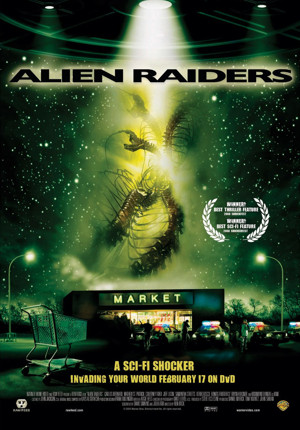 |
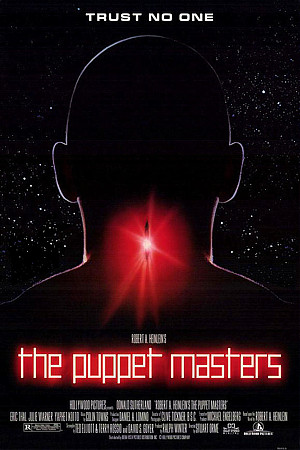 |
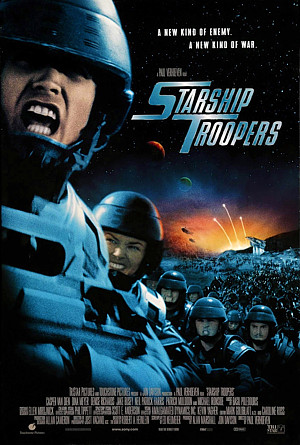 |
| ALIEN RAIDERS MOVIE REVIEW |
THE PUPPET MASTERS MOVIE REVIEW |
STARSHIP TROOPERS MOVIE REVIEW |
FEO AMANTE'S HORROR THRILLERCreated by:E.C.McMullen Jr. FOLLOW ME @ |
| Amazon |
| ECMJr |
| Feo Blog |
| IMDb |
| Stage32 |
| X |
| YouTube |
| Zazzle Shop |
| ALIEN IN 30 SECONDS (re-enacted by bunnies) ALIEN vs PREDATOR with the VGCATS RESOURCES Official AvP Site PLANET AVP ALIENS versus PREDATORS 2 ALIENS vs PREDATOR 2 The Fansite PLANET AVP ALIEN EXPERIENCE IMDb.com IMPAwards |
